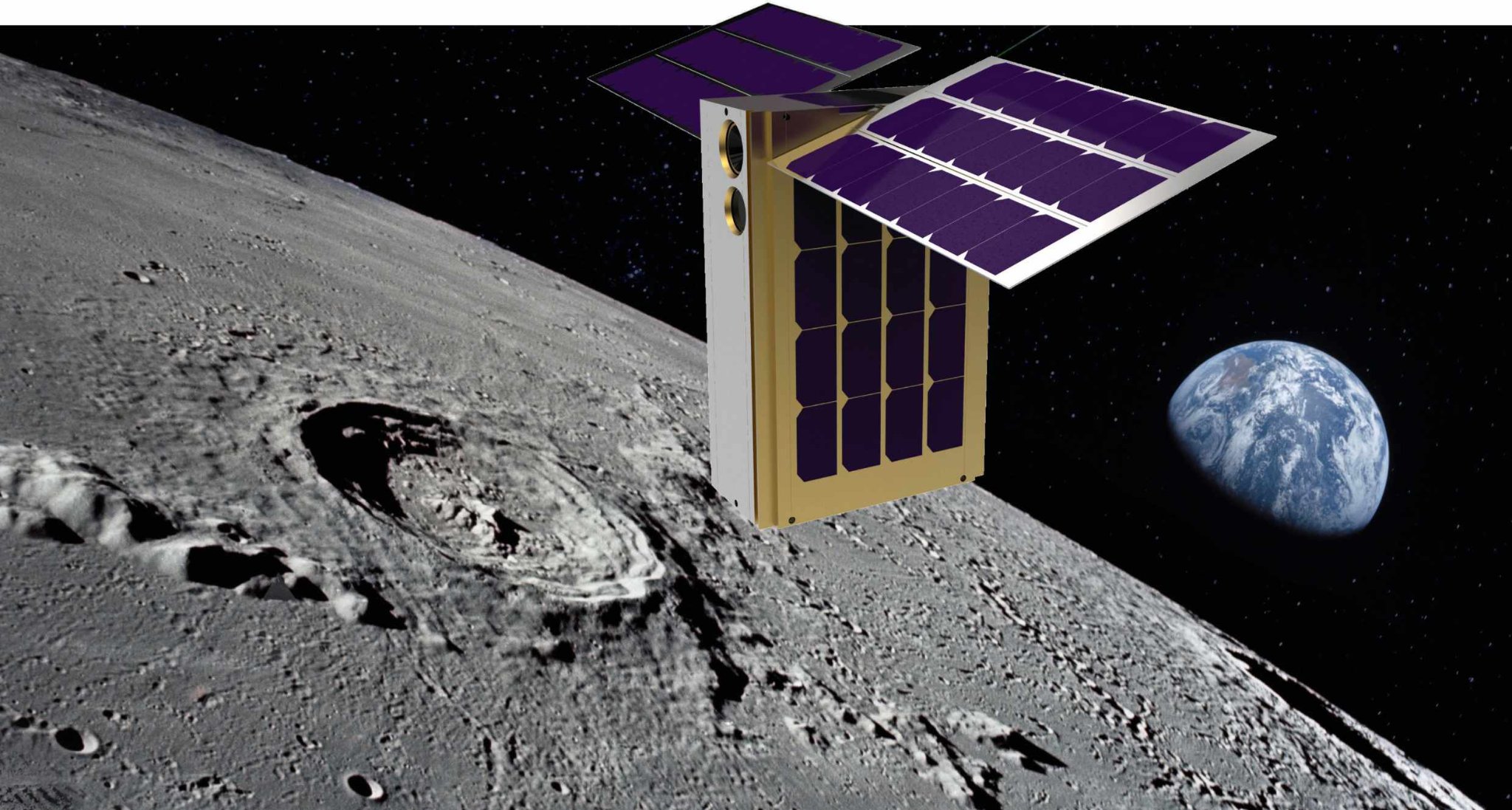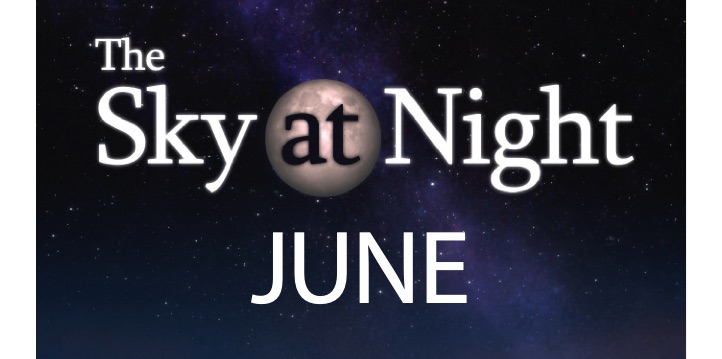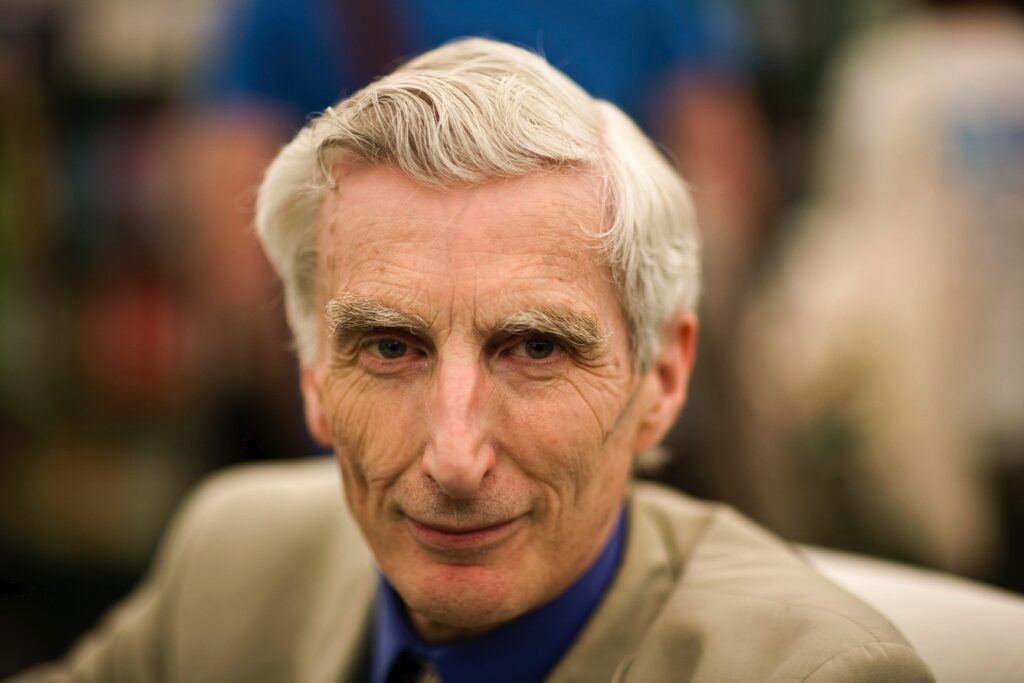The Sky at Night TV show, past, present and future
Inside the Sky at Night
In May’s episode of The Sky at Night, Craig Hardgrove introduced us to the LunaH-Map orbiter, which will soon be mapping ice in the lunar pole

Back in July 2021, my wife and two kids dropped me off at work so I could pick up the LunaH-Map orbiter, pack it up into a case, board a plane and deliver it to NASA’s Kennedy Space Center to be loaded onto the Space Launch System (SLS) rocket. My special delivery, the LunaH-Map (Lunar Polar Hydrogen Mapper), is actually about the size of a large breakfast cereal box. It is a lunar orbiter that will be launched on the same rocket as the Artemis mission and will make maps of the water-ice across the Moon’s south pole.
The LunaH-Map is unique. It has a body made primarily of a light aluminium alloy, with lots of holes to reduce its mass. While its eyes are made of neutron sensitive crystals that burst with colour in the presence of a neutron or gamma ray, its solar panels absorb all the sunlight that touches them in order to create power. The LunaH-Map communicates using a deep-space radio transceiver and gets around using heated iodine molecules, accelerated out from its back. It’s not healthy to anthropomorphise a spacecraft too much, but the LunaH-Map is almost the same size and weight as my real kids, so it’s hard not to make a comparison! I felt like a proud dad when I took off the last ‘remove-before-flight’ plug and placed it into the SLS a year ago.
Getting a mission off the ground
However, the journey began back in 2014, when I put in the proposal. I was four years out of my PhD and wondering why my career hadn’t taken off. After several attempts at getting funding that went nowhere, I gave it one last-ditch effort –a complete planetary mission proposal from start to end. The mission became LunaH-Map and to almost everyone’s surprise, it was selected by NASA for their Small Innovative Missions for Planetary Exploration programme. In the noments after I found this out I was both elated and terrified. The mission had just a small per cent of a usual planetary budget, raising a host of questions about how we would pull it off. would love to say that I had answers to those questions, but in hindsight, I think it takes someone with less experience and a willingness to learn to drive missions forward in these scenarios.
All the technologies that enable LunaH-Map’s scientific measurements were developed over the past seven years, and the spacecraft was assembled in the clean rooms at Arizona State University in early 2021.
As LunaH-Map was a small mission with a small team, I’ve had to spend time handling not only the scientific aspects of the mission, but management, system engineering, navigation, operations, sub-contractor relationships and licensing – the list goes on.
In some ways a new mission like this needed someone a bit naïve, and I’m happy to be the guinea pig for NASA as we figure out together how to make these very small, high-risk, high-reward missions a reality in the future. All that said, I think we did a great job with the resources we had. The spacecraft we delivered to NASA is in great shape and is capable of completing its scientific mission at the Moon.
I could not be happier because, in a few short months, the LunaH-Map orbiter – strapped to a 5.75 million pound rocket capable of 8.8 million pounds of thrust – will be launched to the Moon, accelerating from Earth at over 4G.
Craig Hardgrove is an Assistant Professor at Arizona State University and the Principal Investigator of the LunaH-Map mission
Looking back: The Sky at Night
6 June 1981

On the 6 June 1981 episode of The Sky at Night, Patrick Moore was joined by planetary scientist Garry Hunt to discuss an event that wasn’t to happen for another eight years – Voyager 2’s encounter with Neptune.
At the time, Voyager 1 had already flown past Jupiter and Saturn, while Voyager 2 was due to encounter Uranus in 1986 and Neptune in 1989. Back then, Neptune was an unknown: just a distant dot in the sky barely visible to the naked eye, which had never had close-up analysis. Itwas so faint that it wasn’t discovered until 1781, when astronomer William Herschel mistook it for a comet, only realising he had found a new member of the Solar System two years later.
It wasn’t until 25 August 1989, when Voyager 2 flew past Neptune, that we were able to get our first real look at the distant planet – an encounter which revealed more than a few surprises. Rather than the calm, frigid ice giant that was expected, Voyager 2 revealed several dark spots in the planet’s blue atmosphere, where storms blew with some of the fastest winds measured in the entire Solar System. Wind speeds were found to be as high as 2,500km/h.
Although Voyager 2 remains the only mission to have visited Neptune, improvements to ground and spacebased telescopes mean that we have been able to keep track of the planet from afar as it makes its 165-year journey around the Sun.

The Astronomer Royal at 80
Professor Martin Rees has held the position of the UK’s Astronomer Royal since 1995. Today, he is known as a worldwide authority on the subjects of cosmology, the future of spaceflight and the prospect of finding life beyond Earth. To celebrate his 80th birthday, in this episode he looks back over the biggest discoveries and achievements over 50 years of astronomy.
BBC Four, 13 June, 10pm (first repeat BBC Four, 16 June, time tbc)
Check www.bbc.co.uk/skyatnight for more up-to-date information
